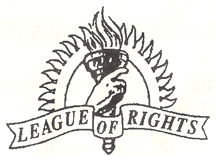The Discontent of the Right: An Overview, By James Reed
In the contemporary political landscape, the intensity of partisan emotions between the Left and Right, at least in the US and Europe, has reached unprecedented levels. While much attention has been given to the anger exhibited by the political Left, it is imperative to recognize that the political Right harbors a comparable degree of anger and frustration, even in the time of Trump, but a justified one. Let's delve into the underlying causes of this phenomenon, examining the factors that have contributed to the Right's escalating discontent.
One primary catalyst for the Right's anger is the perception of systemic bias within major societal institutions. Many conservatives believe that the mainstream media, academia, and the entertainment industry are dominated by Left-leaning ideologies, leading to a marginalization of conservative viewpoints. This perceived imbalance fosters a sense of disenfranchisement, as individuals on the Right feel their perspectives are underrepresented or misrepresented in public discourse, to put it mildly.
Additionally, the Right's frustration is amplified by concerns over free speech and censorship. Incidents involving deplatforming, content moderation, and cancel culture are often viewed by us conservatives as direct assaults on our ability to express dissenting opinions. The belief that expressing traditional or Right-leaning views can lead to social ostracism or professional repercussions intensifies feelings of resentment and victimization.
Economic factors also play a significant role in fuelling the Right's righteous anger. Globalization, technological advancements, and shifting labour markets have led to economic dislocation for many working-class individuals, particularly in industries such as manufacturing and coal mining. The perception that political elites prioritisse international interests or progressive social policies over the economic well-being of traditional industries exacerbates the Right's sense of betrayal and abandonment, and this backlash led to the presidency of Donald Trump.
Immigration and demographic changes, the Great White Replacement, further contribute to the Right's unease. The influx of immigrants and the increasing diversity of populations areperceived as threats to cultural identity and social cohesion, which they are. Concerns over job competition, cultural assimilation, and national security intertwine, leading to heightened anxiety and opposition to immigration policies perceived as lenient or unregulated.
Moreover, the Right's anger is often a reaction to rapid social changes that challenge traditional values. Debates over issues such as same-sex marriage, gender identity, and reproductive rights are seen byconservatives as eroding the moral fabric of society, which it is doing. The swift pace of these changes, coupled with legal and institutional endorsements, creates a sense of cultural displacement and moral disorientation among Right-leaning individuals.
In response to these multifaceted grievances, segments of the Right have mobilized through grassroots movements, alternative media platforms, and political activism. There is a movement by some to begin setting up parallel economies to avoid the oppression that the Left have sown. Here is some optimism from Dr Steve Turley:
https://www.youtube.com/watch?v=tNe8547wVuU
https://fight.turleytalks.com/2025-summit?utm_source=GHL&utm_medium=YouTube&utm_campaign=Pre_Launch


Comments